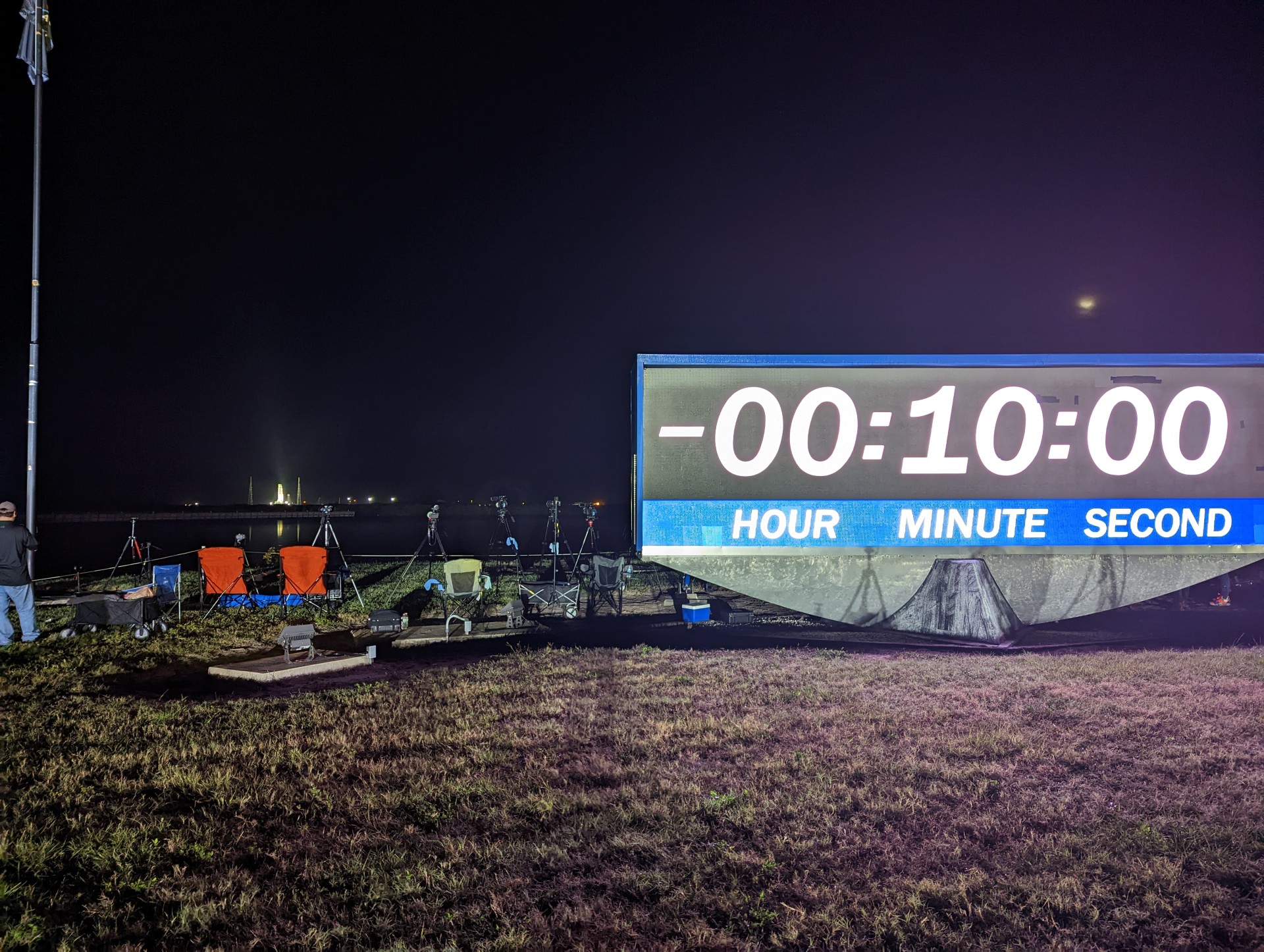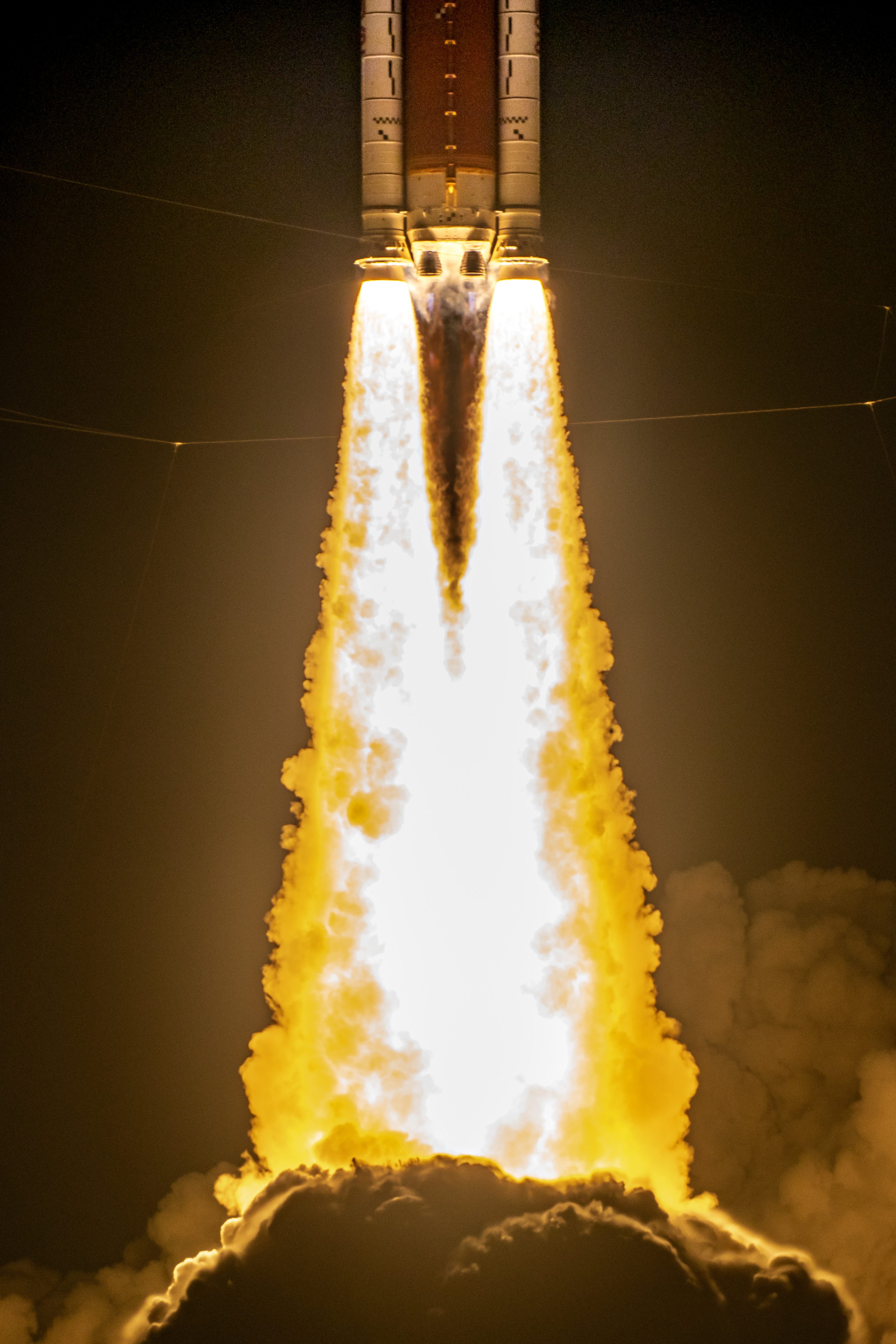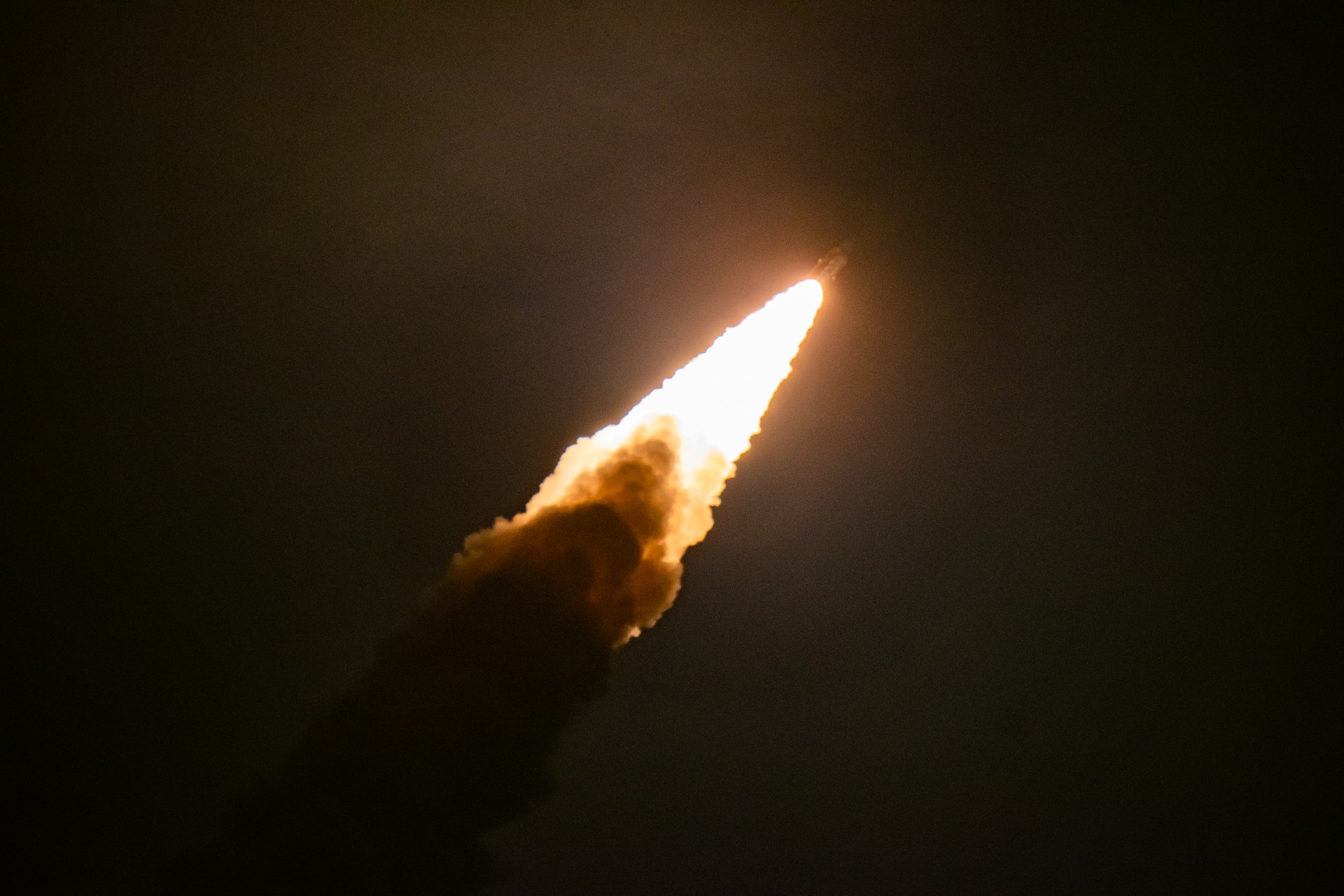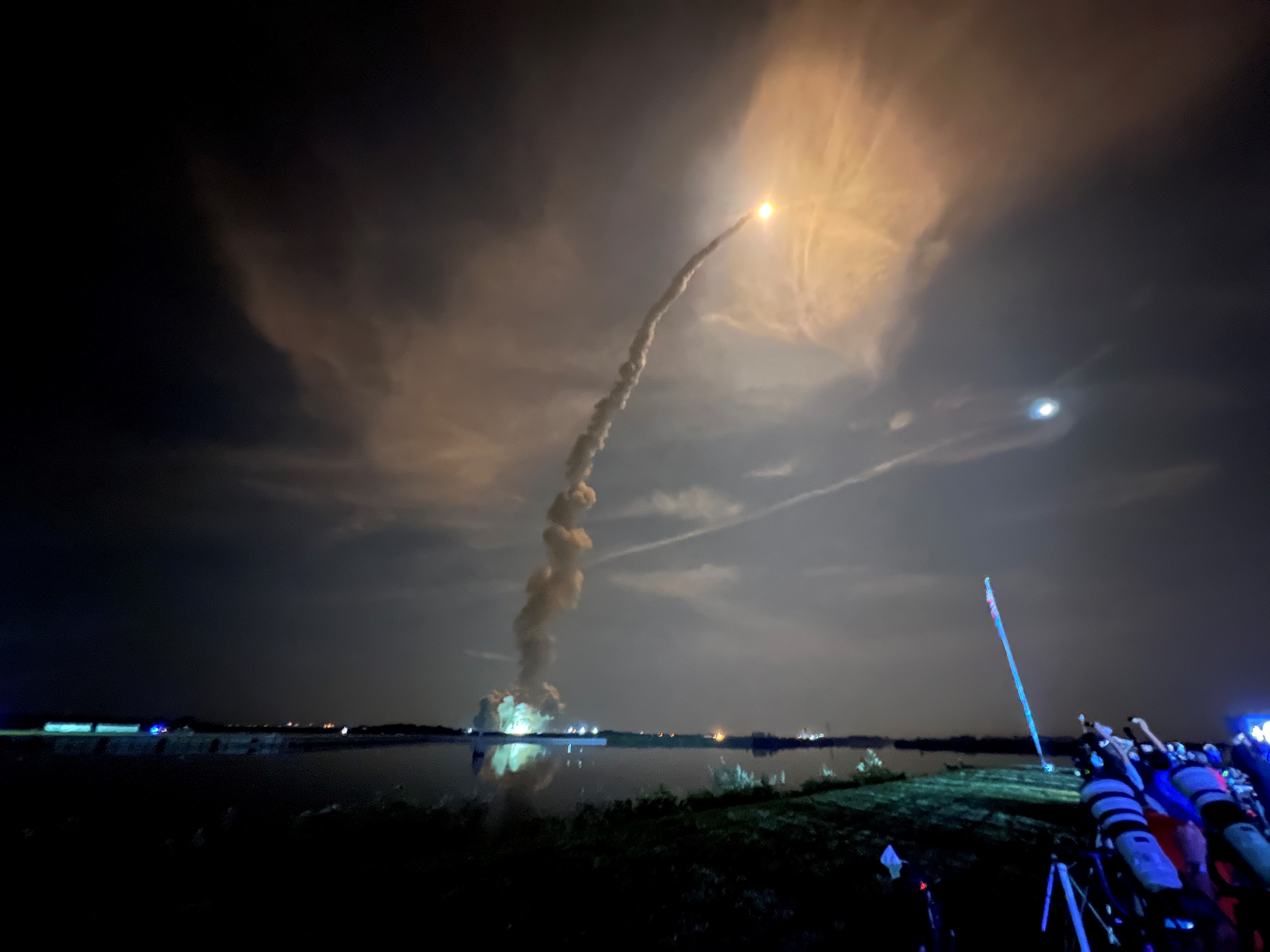As Orion closes the gap between the moon and Earth ahead of its Pacific Ocean splashdown on Sunday (Dec. 11), we’re looking back at the epic launch that got us here.
Tensions were high in the hours leading up to last month’s Artemis 1 launch. Spectators began gathering at NASA’s Kennedy Space Center (KSC) and across Florida’s Space Coast early in the evening of Nov. 15 in anticipation of the late-night launch attempt, and a few off-nominal occurrences during countdown spurred some doubts about whether the rocket would get off the ground at all.
While NASA’s new Space Launch System (SLS) rocket sat fueled on the launch pad, ready to launch the Orion spacecraft to the moon, connection issues at a ground tracking station and a leaky valve on the Mobile Launch Platform (MLP) put a hold on the clock and began pushing the liftoff time into the night’s two-hour window. NASA officials addressed the latter by sending a “Red Crew” to the launch pad to physically fix the malfunctioning valve, which made tensions even higher.
Related: NASA’s revolutionary Moonboard launched Artemis 1 coverage to new heights
Both the Saturn V Center and the press site at KSC are about as close as anyone is permitted to get to the area’s launch pads while a rocket is begin fueled. Both sit just under 3.5 miles (5.6 kilometers) from Launch Complex 39B (LC-39B), where Artemis 1 was launched. Getting any closer is a safety violation — except for NASA’s Red Crew. These specially trained technicians are deployed to fix issues at the pad, next to pressurized and fueled launch vehicles. It is not a job for the faint of heart.
Unsure how the night would proceed, many at the KSC press site began drafts of their launch scrub stories. Others sat silent, attention glued to the mission broadcast while the valve issue was resolved. Valiantly, the Artemis 1 Red Crew was escorted to LC-39B, where the trio made quick work of a set of “visibly loose” packing nuts that had been the source of the valve leak, according to the NASA broadcast.
Relief came as NASA announced the team’s success and a forthcoming T-0 time from mission managers, but the excitement was interrupted by a hold called due to a faulty ethernet connection at a downrange ground tracking station. The clock was stuck at T-10 minutes, and again uncertainty grew around the possibility of launching.
During any night launch at KSC, there isn’t any confusion about the launch pad’s location along the horizon in the distance behind the countdown clock. Rockets stand bathed in a dozen of NASA’s brightest spotlights, shining upward to set the stage for one of humanity’s greatest technological accomplishments. SLS’ massive size made it unmistakable in the nighttime hours along Florida’s coast.

Finally, just after 1:36 a.m. (0636 GMT) on Wednesday (Nov. 16), Artemis launch director Charlie Blackwell-Thompson came on NASA’s broadcast from mission control to give the “go” to resume the countdown. Silence fell over KSC’s press room as she began: “On behalf of all the men and women across our great nation who have to worked to bring this hardware together to make this day possible, and for the Artemis generation, this is for you. At this time I give you a ‘go’ to resume count and launch Artemis 1.”
Journalists sprang from their seats and rushed to out to the lawn next to NASA’s massive mission clock, which had begun counting down from its hold at T-10 minutes. Across the whole Space Coast, spectators gathered and turned their eyes to the horizon.
In what seemed like the blur of a moment, the remaining minutes on the Artemis countdown clock ticked to the final seconds. By the time the count reached zero, the four main engines of the SLS core stage had already ignited, bringing a glow to the launch pad’s base viewed off in the distance. Cheers erupted as SLS’ solid rocket boosters ignited and began to lift the vehicle skyward.

All at once, the light from the flames of the engines and the solid rocket boosters burst from the launch pad to reflect off the waters near the press site, turning the humid Florida night as bright as day as the rocket began to climb into Earth’s atmosphere.

The light faded as the rocket flew higher, and by the time the sound of the engines’ ignition traversed the landscape to reach spectators, the rocket was already well on its way to space.

A smoke trail followed the rocket’s trajectory into the sky, its path nearly intersecting the view of the moon. Together, the two shone bright until SLS’ solid rocket boosters burned out and detached from the vehicle, leaving a fading speck to carry Orion toward its lunar destination.

Fast forward to today: Orion has nearly completed its trip around the moon, and is scheduled to splash down in the Pacific Ocean on Sunday.
Barring any mission anomalies or production delays, NASA is planning to fly astronauts to lunar orbit aboard Orion for Artemis 2 in 2024, with a lunar landing scheduled as part of Artemis 3 in 2025.
Follow Josh on Twitter at @JoshDinner (opens in new tab). Follow us on Twitter @Spacedotcom (opens in new tab) or on Facebook (opens in new tab).

